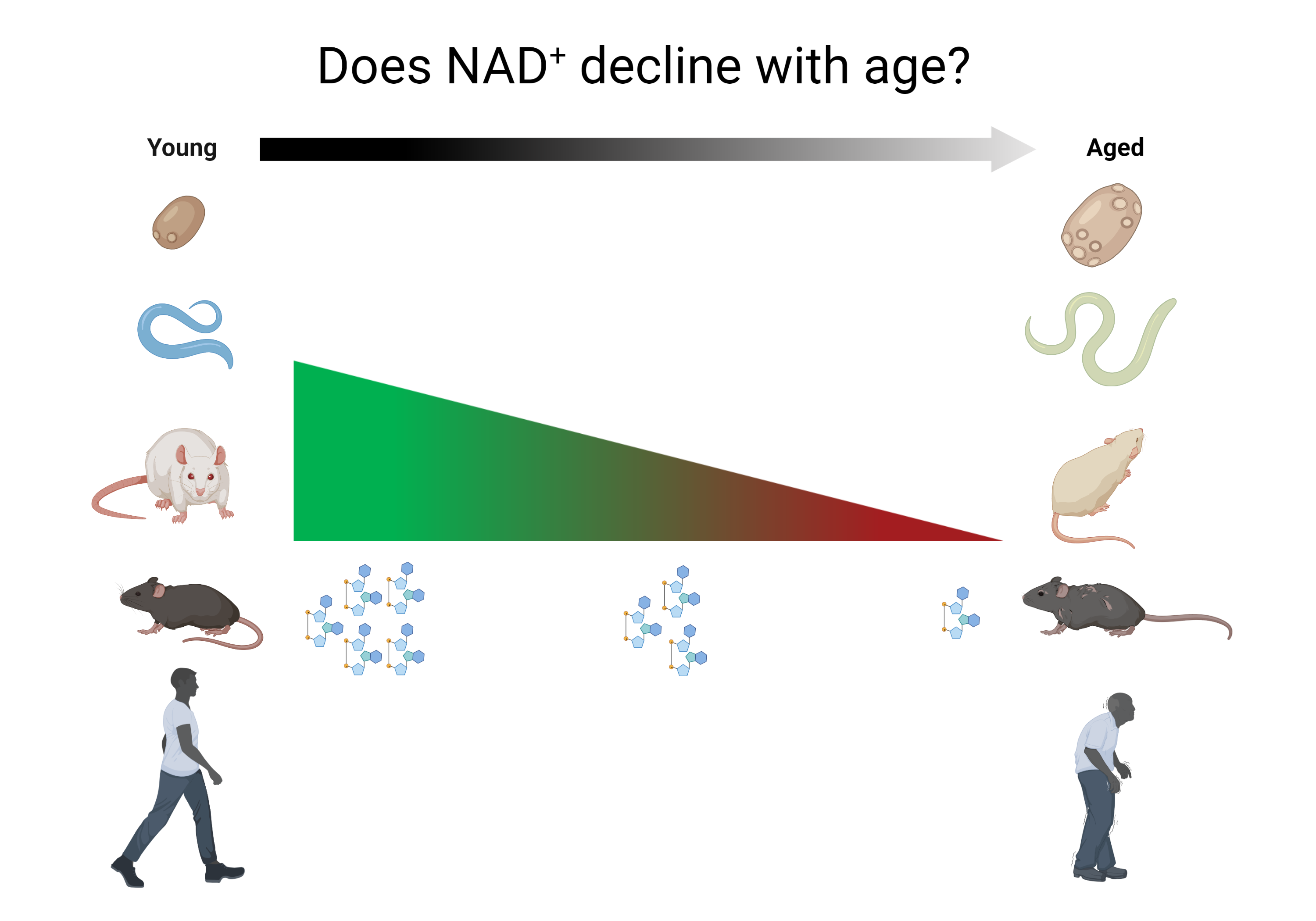Nicotinamide adenine dinucleotide (NAD+) is an essential molecule involved in various metabolic reactions, acting as an electron donor in the electron transport chain and as a co-factor for NAD+-dependent enzymes. In the early 2000s, reports that NAD+ declines with aging introduced the notion that NAD+ metabolism is globally and progressively impaired with time. Since then, NAD+ became an attractive target for potential pharmacological therapies aiming to boost NAD+ levels to promote vitality and protect against age-related diseases. This review summarizes and discusses a collection of studies that report the levels of NAD+ with aging in different species (i.e., yeast, C. elegans, rat, mouse, monkey, and human) to determine whether the notion that overall NAD+ levels decrease with aging stands true. We find that despite systematic claims of overall changes in NAD+ levels with aging, the evidence to support it is very limited and often restricted to a single tissue or cell type. This is particularly true in humans, where the development of NAD+ levels during aging is still poorly characterized. There is a need for much larger, preferably longitudinal, studies aimed to assess how NAD+ levels develop with aging in various tissues. This will strengthen our conclusions on NAD+ during aging and should provide a foundation for better pharmacological targeting of relevant tissues.

